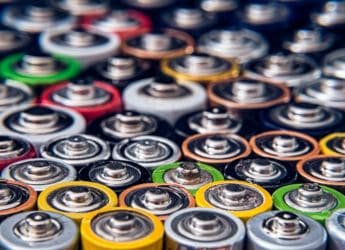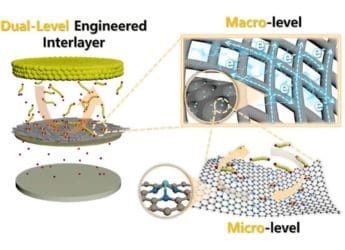- Home
- Science
- Science News
- Scientists Identify Oxygen Trapping Weakens Sodium Ion Battery Performance
Scientists Identify Oxygen Trapping Weakens Sodium-Ion Battery Performance
Oxygen trapping drives voltage loss in sodium cathodes, offering solutions for stable batteries.

Photo Credit: Unsplash/ Roberto Sorin
EPR spectroscopy reveals oxygen trapping as key to voltage decay in sodium cathodes.
Professor Li Chao, working at ECNU, found that the oxygen trapping in the high-sodium P2-type layered oxide cathodes is the foremost culprit for voltage degradation. Taking advantage of the electron paramagnetic resonance (EPR) spectroscopy at the Steady-State Strong Magnetic Field Facility, Chinese Academy of Sciences, they monitored the dynamics of oxygen species observed and connected them with structural degradation. Reported in the journal Advanced Energy Materials, the discovery offers new insight for building more stable cathodes for sodium-ion batteries – an important goal in enabling smaller-scale energy storage applications and renewable energy technologies.
Oxygen Trapping Identified as Key Factor Behind Voltage Loss in High-Sodium Cathodes
According to the Advanced Energy Materials report, the researchers noted that as the cathode is used, oxygen in it reduces to form molecular O2, which some gets retained in a discharged state over several cycles.
This uncontrollable oxygen growth was pinned as the dominant origin of U loss and capacity decay. EPR measurements also revealed local structural differences, such as the phase separation of lithium- and manganese-rich phases, which would accelerate cycling degradation.
The team explained that high-sodium-content cathodes, with insufficient interlayer spacing, are more prone to oxygen trapping compared to low-Na counterparts. Low-Na materials' wider spacing lets oxygen migrate safely, preventing degradation, emphasising interlayer engineering's role in battery stability.
Real-time EPR provided a means to follow reactive intermediates and was used to direct approaches for voltage fade reduction and cathode performance enhancement. The research provides a new opportunity for the design of high-performance sodium-ion batteries for renewable energy storage, electric vehicles, and large-scale applications. The new batteries should last longer than the current ones by avoiding oxygen trapping and maintaining much more energy capacity for more charge-discharge cycles.
Get your daily dose of tech news, reviews, and insights, in under 80 characters on Gadgets 360 Turbo. Connect with fellow tech lovers on our Forum. Follow us on X, Facebook, WhatsApp, Threads and Google News for instant updates. Catch all the action on our YouTube channel.
Related Stories
- Samsung Galaxy Unpacked 2025
- ChatGPT
- Redmi Note 14 Pro+
- iPhone 16
- Apple Vision Pro
- Oneplus 12
- OnePlus Nord CE 3 Lite 5G
- iPhone 13
- Xiaomi 14 Pro
- Oppo Find N3
- Tecno Spark Go (2023)
- Realme V30
- Best Phones Under 25000
- Samsung Galaxy S24 Series
- Cryptocurrency
- iQoo 12
- Samsung Galaxy S24 Ultra
- Giottus
- Samsung Galaxy Z Flip 5
- Apple 'Scary Fast'
- Housefull 5
- GoPro Hero 12 Black Review
- Invincible Season 2
- JioGlass
- HD Ready TV
- Laptop Under 50000
- Smartwatch Under 10000
- Latest Mobile Phones
- Compare Phones
- Huawei Mate 70 Air
- Moto G57
- Moto G57 Power
- Motorola Edge 70
- Moto G Play (2026)
- Moto G (2026)
- Realme C85 Pro 4G
- Realme C85 5G
- MacBook Pro 14-inch (M5, 2025)
- Asus Vivobook S16 (S3607QA)
- iQOO Pad 5e
- OPPO Pad 5
- Garmin Venu X1
- Redmi Watch 6
- Samsung 65 Inch LED Ultra HD (4K) Smart TV (UA65UE84AFULXL)
- Samsung 55 Inch QLED Ultra HD (4K) Smart TV (QA55QEF6AULXL)
- Asus ROG Ally
- Nintendo Switch Lite
- Haier 1.6 Ton 5 Star Inverter Split AC (HSU19G-MZAID5BN-INV)
- Haier 1.6 Ton 5 Star Inverter Split AC (HSU19G-MZAIM5BN-INV)

















